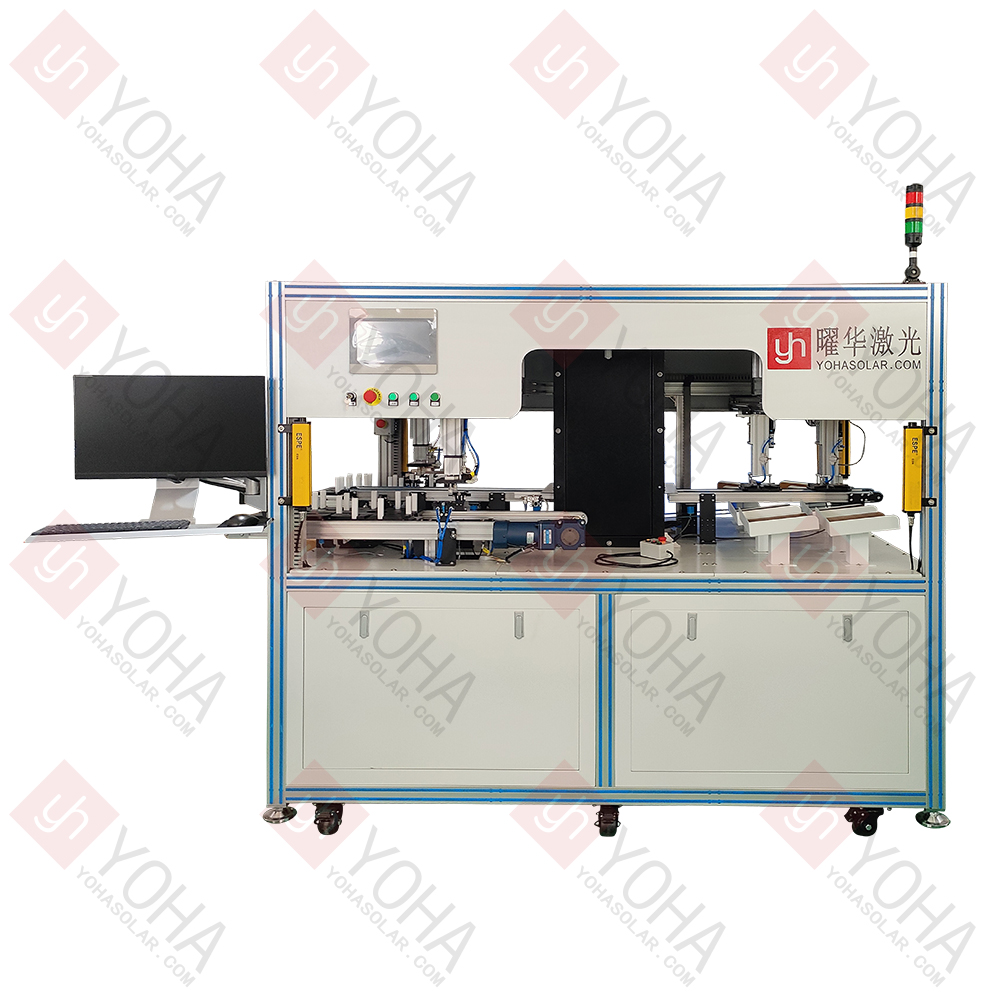Welcome to Wuhan Yoha Solar Technology Co., Ltd!
common problem
Site Map
Language:
 Chinese
Chinese
 English
English
Welcome to Wuhan Yoha Solar Technology Co., Ltd!
common problem
Site Map
Language:
 Chinese
Chinese
 English
English
The Automatic Solar Cell PL Sorter is a high-efficiency, non-contact inspection and sorting equipment integrated at the backend of photovoltaic cell production lines. It utilizes a high-power laser to excite the photoluminescence (PL) signal from solar cells. A high-sensitivity camera captures this signal to generate PL images. Combined with advanced image processing algorithms, it automatically completes rapid screening of internal defects (such as micro-cracks, finger interruptions, contamination, material inhomogeneity, and sintering issues), performance evaluation (e.g., efficiency prediction), and grade sorting (e.g., grading based on efficiency, defect severity) for high-speed conveyed cells in an extremely short time (typically just a few seconds). It then automatically sorts cells of different grades into corresponding bins, significantly improving production line sorting efficiency and product consistency.

High-Speed Automation Integration: Seamlessly integrates into production lines, enabling automatic loading, conveying, inspection, sorting, and unloading of cells. Features an extremely high Units Per Hour (UPH) capacity, meeting the high-speed requirements of large-scale production.
Non-Contact & Non-Destructive Inspection: Employs laser-excited photoluminescence (PL) technology, requiring no physical contact with the cell. This completely avoids potential scratches or stress damage during inspection, ensuring cell integrity.
Trifecta of Core Functions:
Rapid Defect Screening: High-speed, precise detection of key internal defects like micro-cracks, finger interruptions, contamination, and sintering issues.
Synchronous Performance Evaluation: Intelligent algorithms based on PL signals predict core performance parameters like cell conversion efficiency.
Automatic Grade Sorting: Automatically sorts cells into different bins based on preset criteria (e.g., predicted efficiency, defect severity).
Intelligent Algorithms & Precise Sorting: Equipped with advanced image processing and data analysis algorithms, ensuring accurate defect identification and reliable efficiency prediction. Drives high-precision mechanical actuators for stable and accurate automatic sorting.
Traceable Production Data Management: Comprehensively records PL images, defect information, predicted efficiency, sorting grade, and other data for each cell. Generates detailed reports, providing robust support for production monitoring, quality analysis, and product traceability.
| Item | Specification |
|---|---|
| Model | YHFX-ZDPL |
| Cell Specification | Compatible with Mono-crystalline, Poly-crystalline cells, PERC, HJT, TOPCon, etc. |
| Camera Resolution | 5 Megapixels |
| Camera Type | Custom High-Definition Industrial Camera |
| Sensitivity | Detects cracks narrower than 0.03mm |
| Testing Direction | Vertical Downward |
| Laser Power | 50W |
| Breakage Rate | ≤0.05% (Grade A cells) |
| Throughput (UPH) | 2000~5000 cells/hour |
| Sorting Bins | 8 Sorting Bins (Optional) |
| Loading/Unloading | Automatic |
| Effective Test Area | 230*230mm |
| Functional Expansion | EL/IV Testing Function Optional |
Core Mass Production Equipment: Integrated at the end of cell production lines, enabling high-speed, inline, automated inspection and sorting of large volumes of cells, significantly enhancing production efficiency and product consistency.
Non-Destructive Defect Screening: Utilizes non-contact PL technology for rapid, precise, and full inspection of key internal cell defects (e.g., micro-cracks, finger interruptions, contamination, sintering issues), replacing or supplementing traditional destructive testing.
Intelligent Grading & Matching: Intelligently predicts cell conversion efficiency grades based on PL signals and combines multi-dimensional standards (defects/appearance) for high-precision automatic sorting. Provides accurately matched cell sources for module encapsulation.
Traceable Data Loop: Provides a complete data chain for each cell (PL image, defects, predicted efficiency, sorting result), supporting production yield analysis, process traceability, quality improvement, and module power prediction.
1. Strict Laser Safety Compliance: The equipment contains a high-power laser. ALWAYS wear designated protective eyewear during operation and maintenance. NEVER look directly at the laser beam or open the laser protective cover while the system is running.
2. Ensure Stable Power Supply & Proper Grounding: The device requires a stable power source and reliable grounding to prevent electrical faults, data anomalies, or electrical shock hazards.
3. Maintain Suitable Environmental Conditions: Operate the equipment within specified temperature and humidity ranges. Avoid dusty, oily, and strongly vibrating environments to prevent contamination of the optical system or degradation of mechanical precision.
4. Regular Cleaning of Optical Windows & Lenses: Key optical components like the laser exit window and PL camera lens must be cleaned periodically using professional tools according to schedule. Dust or stains can severely degrade PL image quality and inspection accuracy.
5. Perform Periodic Calibration: Strictly follow the manual to calibrate laser power, camera sensitivity, mechanical positioning accuracy, and the efficiency prediction model. This ensures the accuracy and consistency of inspection results and sorting grades.
6. Ensure Smooth Material Handling: Closely monitor the operation of loading/unloading mechanisms, conveyors, and sorting manipulators. Promptly clear jammed cell fragments to prevent material blockage causing equipment damage or production stoppage.
7. Effectively Shield Ambient Light Interference: The equipment's light curtain/casing must remain intact and properly closed. Any external light leakage can severely interfere with the weak PL signal, causing image failure or false detection.
8. Verify Algorithms & Sorting Logic: Regularly use standard cells or cells with known defects to validate the accuracy of defect recognition algorithms and efficiency prediction models. Adjust and optimize sorting grade thresholds based on actual requirements.
9. Execute Planned Maintenance: Strictly adhere to the maintenance schedule for lubricating moving parts (rails, bearings, belts, etc.), checking sensor status, and replacing consumables (e.g., conveyor belts, suction cups) to prevent unexpected failures.
10. Standardized Operation & Software Backup: Operators must undergo professional training. Regularly back up device parameter configurations, sorting recipes, and historical data to prevent data loss and production interruption due to software faults or system crashes.
TOP
18086473422
MESSAGE
